Pastina is an old family classic that will become a favorite in your household too! It’s an Italian classic comfort food that makes a perfect side dish, lunch for the kiddos, or even a lighter full meal!
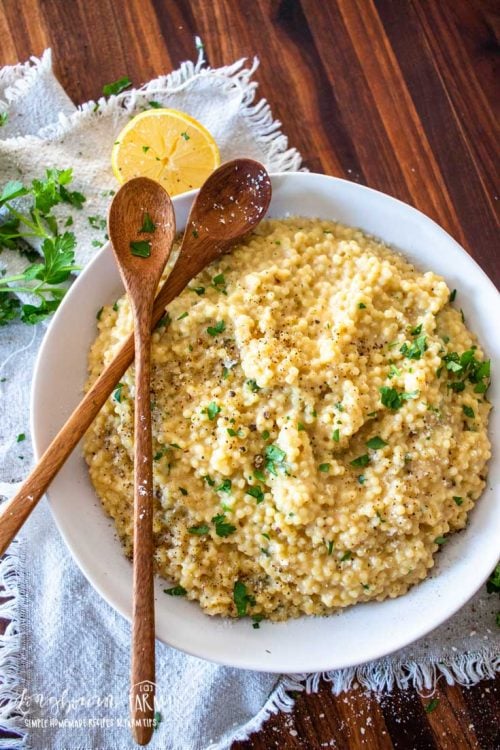
What is Pastina?
Pastina is any type of small pasta and is typically shaped like tiny stars, alphabets, or small grains. It can also refer to acini de pepe. It is not the same as orzo or couscous. Sometimes it can be difficult to find but it should be in the pasta section near all the other pasta. It is often used in soups, especially in Italian cuisine. Pastina is known for its small size, which makes it a popular choice for adding texture and flavor to broths and soups. It is a versatile pasta that can be enjoyed in a variety of dishes beyond soups as well.
Why is pastina called pastina?
The word pastina is derived from the Italian language, where “pasta” means “paste” or “dough.” Pastina is the diminutive form of “pasta,” and in Italian, the suffix “-ina” is often used to indicate something small. So, pastina means little or small pasta, which is why the exact shape can vary depending on who you ask or where you’re shopping. Acini de pepe translates to “berries of the pepper” and can refer to “tiny pearls” which can also be what pastina looks like.
What is similar to pastina?
If you’re looking for pasta shapes similar to pastina, you might consider the following options as I think they all fit under the umbrella of “pastina” pastas:
- Orzo: Orzo is a small, rice-shaped pasta that is often used in soups, salads, and pilafs. It has a similar size and texture to pastina, making it a good substitute.
- Acini di Pepe: Acini di Pepe are tiny, round pasta shapes that resemble small beads. They are commonly used in soups and can be a good replacement for pastina.
- Stelline: Stelline pasta is shaped like small stars, similar to some variations of pastina. It’s a great choice for adding a fun and whimsical element to soups.
- Anellini: Anellini pasta is small ring-shaped pasta that can be used in soups and stews, much like pastina.
- Ditalini: Ditalini pasta is short, small tubes of pasta that can also be used in soups and pasta salads. While it’s not exactly the same as pastina, it can work well in similar dishes.
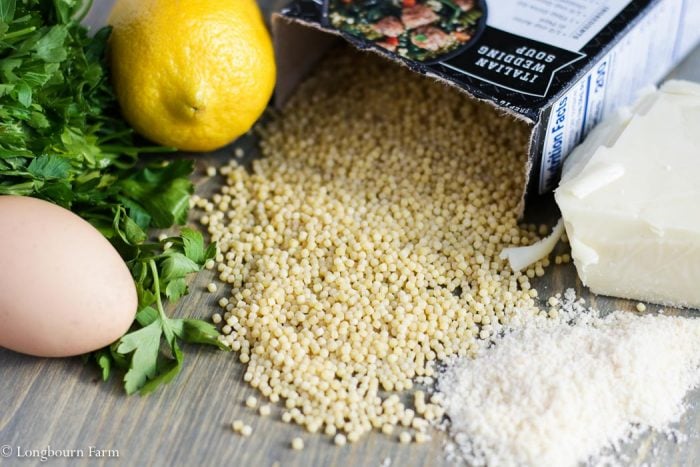
Pastina (Acini de Pepe Recipe) Ingredients
- Pastina
- Chicken broth
- Mozarella cheese, or any mild cheese
- Salt
- Pepper
- Parmesan
- Egg
- Lemon juice
As with most Italian recipes, the ingredients are simple – pasta, some cheese, lemon, and an egg. The pasta is sometimes labeled as Pastina or it can be labeled as Acini de Pepe {which actually means grains of pepper or something}, I’ve seen it both ways! It’s just tiny round balls of pasta, you’ve probably seen it in recipes like Frog Eye Salad.
My mom, aunt or grandmother would make this for me and my cousins whenever we were sick. Sometimes it would be how I made it, most often they made it with american cheese, and sometimes it would be more brothy like a soup.
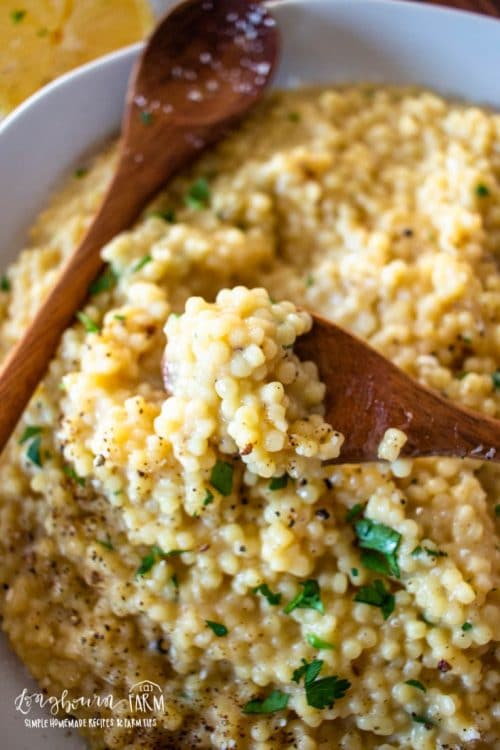
How to make Pastina
- In a saucepan, bring your 3 cups of broth or water and the pastina to a boil.
Stir occasionally.
- Add in more water/liquid as needed.
You won’t be draining the liquid out of the pot, so make sure to keep an eye on the pot so that the liquid doesn’t evaporate.
- After the pasta has mostly finished cooking, there should still be a bit of liquid remaining in the pot.
- Stir in the cheeses, salt, pepper, and egg until the cheese has melted and everything is combined.
- It’s normal to see streaks of egg white throughout the pastina.
- Squeeze in the lemon juice from half of a lemon and stir.
Taste and adjust seasonings if needed. Personally, I like to add in a lot of lemon juice.
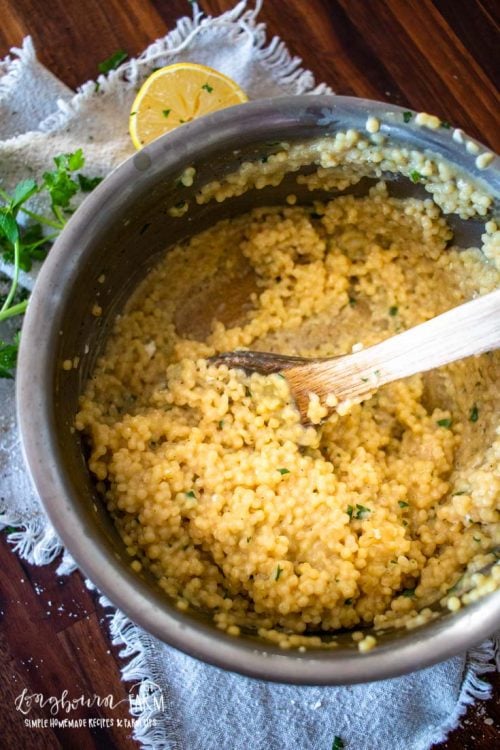
Pastina Recipe FAQs and Tips
These are essentially the same thing and can be interchanged in recipes without fail. Pastina is Italian for “tiny pasta” and can be thought of as a category for smaller pastas like acini de pepe, orzo, and those tiny pasta pieces you find in ABC soup (as examples).
You will often find pastina pasta in the grocery store’s pasta section in a small box labeled Acini De Pepe. A small box of it is about 12 ounces.
While we will be adding a raw egg into the mixture, the residual heat of the dish and the acidity of the lemon juice will cook the egg. Make sure to work swiftly and efficiently to make sure that the instructions are followed and the egg is safely cooked for consmption.
Egg whites help to work as a binder in baking recipes but in this pasta dish it helps to add to the creamy and thick texture of the dish. Giving it a subtle and rich flavor while leaving behind a velvety smooth texture that works great with the melted cheese.
If you can find this tiny noodle a good (and easy) sub to try is Orzo pasta. While it’s not the same shape, it is still a small pasta that should cook relatively the same. Just keep an eye on the liquid in the pot as it cooks because it may need a bit more than the smaller pasta balls.
Orzo is pasta just like acini de pepe but it is shaped like an oval instead of a small ball.
You can substitute acini de pepe with pastina or orzo. Orzo won’t be the same but it will still be delicious.
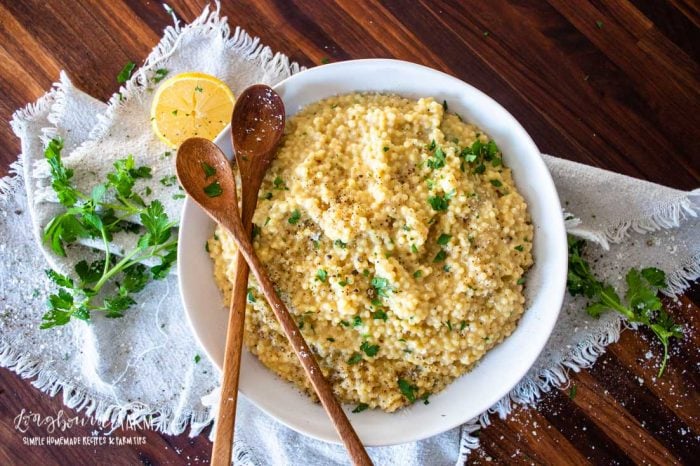
What to Serve with this Acini de Pepe Recipe
- Easy Cucumber Salad
- Lemon Salad Dressing with Easy Green Salad
- How to Cook Frozen Peas
- How to Meal Prep Chicken
- Grilled T-Bone Steak
- Skillet Chicken with Lemon Sauce
More favorites from Longbourn Farm
Pastina (Acini de Pepe) Recipe
Equipment
Ingredients
- 12 oz Pastina pasta 1 box, see note
- 2 cups chicken broth
- 2 cups water extra may be needed
- 1/4 cup mozarella cheese shredded
- 1 1/2 tablespoons parmesan cheese
- 1 egg room temperature is best, see note
- 1/2 teaspoon salt
- 1/4 teaspoon pepper
- 1 tablespoon parsley fresh chopped, or 2 teaspoons dried
- 2 tablespoons lemon juice fresh squeezed
Instructions
- Measure 2 cups of broth and 2 cups of water into a saucepan. Add the pastina and bring to a boil, stirring occasionally.
- You will not be draining the pasta, so check the liquid level frequently and add more as needed.
- When the pasta is mostly cooked, there should be a small amount of liquid left in the pan.
- Add the rest of the ingredients, besides the lemon juice, and stir until the cheese is melted and everything is combined.
- There will be streaks of cooked egg white in the pastina, that is normal.
- Squeeze in the juice from half of a lemon, stir, and taste. Adjust seasonings and lemon to your taste. I like a lot of lemon juice.
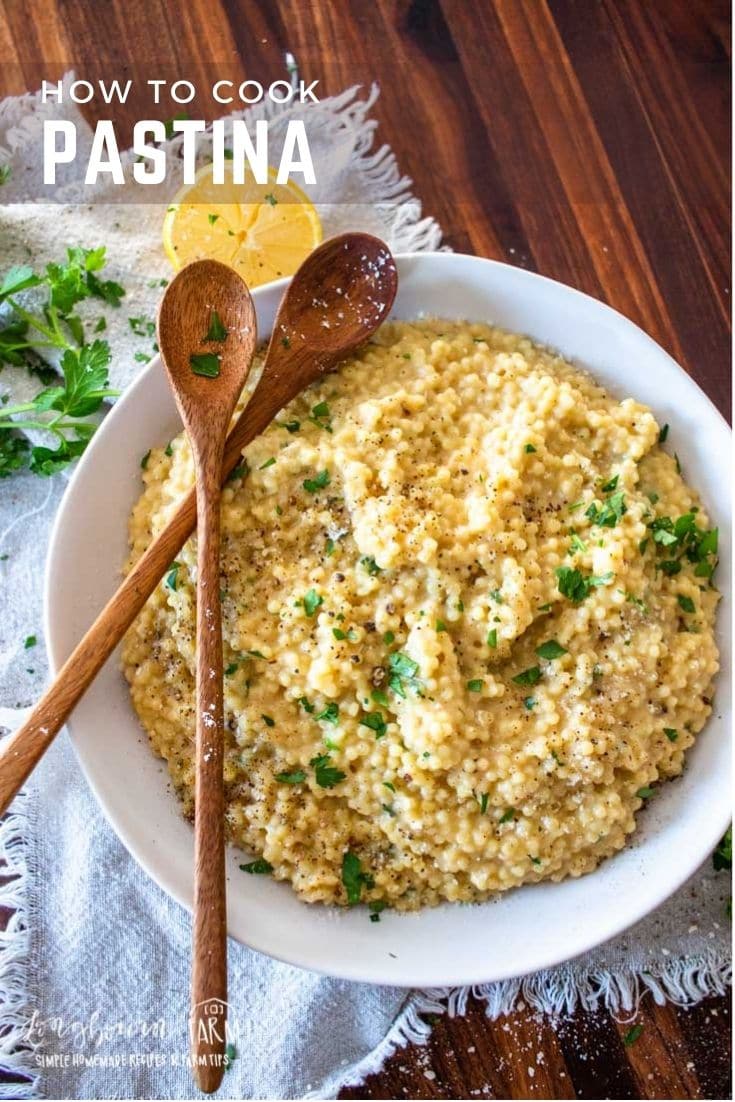
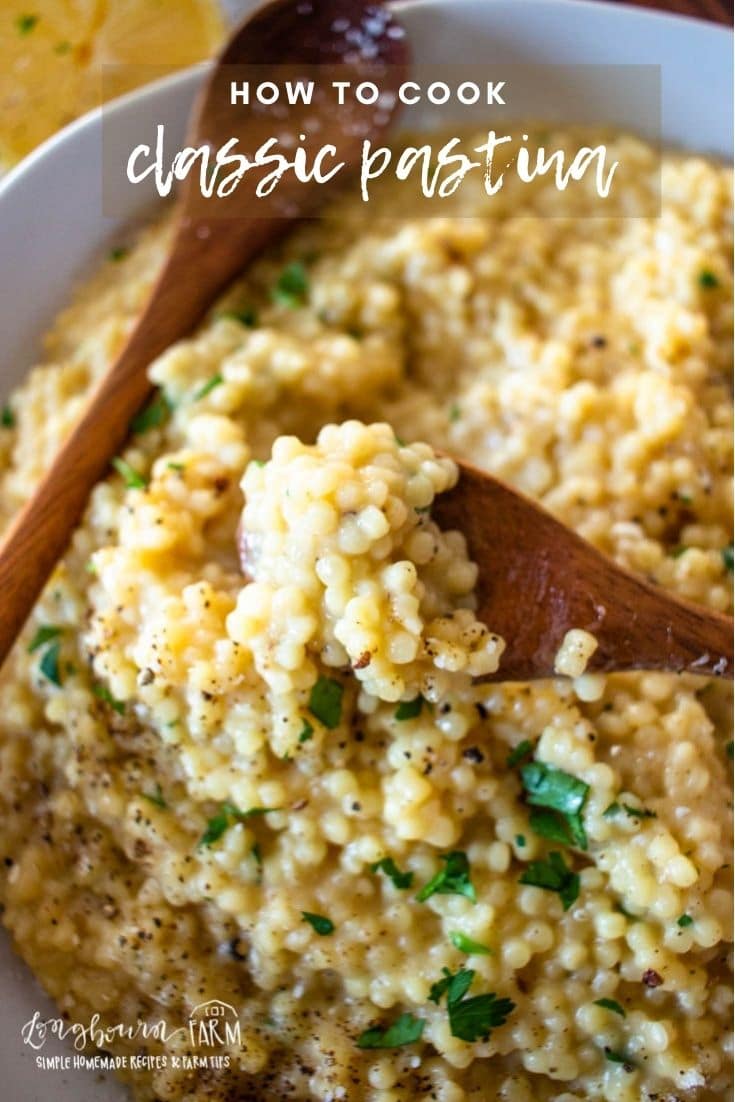
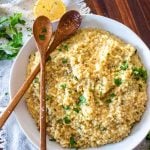

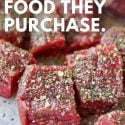



Jeanne says
This was wonderful until I added the lemon juice, that completely ruined it. My husband and daughter wouldn’t eat it, and they eat most anything. I’m going to remake this without the lemon because as I cooked it, it tasted delicious until the lemon. I used GF pasta and needed quite a bit more liquid. I omitted the egg, didn’t see the reason for it.
Judygirl says
I think it’s a matter of your tastebuds! You left out the added flavor of the egg! The lemon was a preference! I was raised on pastina with an egg in – that is how Italians did it! My grandmother would also cook the pasta and added milk – which was a great addition if you were raised on it! It’s all good – each Italian family cooked it the way their family liked it, respectively!
Judygirl says
The lemon juice and egg is the best part! My grandmother never did the lemon and as kids they would cook the pastina without the soup and added milk and butter – it was fantastic but even my husband loved the lemon! It is an Italian recipe that we grew up on as kids over 40 years ago and it still warms our hearts but it’s a matter of what your family likes! Any way you cook it is the love you put into it for your family! We our family for the love they put into it and we love and appreciate the memories!
Les says
I grew up in an Italian family. Pastina was a favorite tht my ma would make for me often and especially if I was sick. I make it for my kids now, but this recipe is far from what we make.
We cook the pastina and when it’s done we do not drain. We add butter (about 1/2-1 stick) depending on taste. Add salt pepper and basil and oregano. Finite!
Mmm buttery, creamy.
Alli says
This recipe doesn’t call for draining the pasta.
Heidi says
This was fantastic. Reminded me of the Greek soup avgolmono, with the rich egg and lemon.
Jessica says
Made exactly as written, and WOW! So tasty. Thank you for sharing!!
maryanne Brown says
Pastina is tiny stars. On the box it says pastina.
Alli says
Yes, some brands have stars for the shape of pastina.
Btooklyn says
Pastina and ancina de Pepe r two different pastas
Alli says
Yes, by a 1mm difference. Both will work for the purposes of this recipe and are basically the same.
Al says
My mom made me something similar to this when I was sick as a child. I really liked it except for the strings of egg white.
Is there a reason why you wouldn’t beat the egg before adding it?
Alli says
Just tradition for me, if you want the egg to be more evenly blended, beat it and add a small amount of the hot noddles to the egg to temper it and then pour that mixture into the whole pasta! Should turn out great.
Joe D says
Nice recipe. I’d never heard of acini de pepe and pastina being used interchangeably before. Maybe it’s just the pasta brands I know best, but Ronzoni & Barilla always clearly distinguished between the two, with what you’ve used in this recipe labeled “acini de pepe” and much smaller pasta called “pastina”. What I’ve always know as pastina is the almost cous-cous-like grains in the picture for this recipe:
https://leitesculinaria.com/78234/recipes-pastina-with-butter-and-milk.html
Alli says
I’ve never seen both sold by the same brand. For the purposes of this recipe, both work just fine and turn out basically identical. I’ve used both many, many times. The picture you referenced is star-shaped pastina, which is why it has a grainy appearance at first glance. You’re really just seeing the many tiny points of the stars.
Judygirl says
It goes back in my Italian family over 40 years! We always made acini de Pepi in our pastina! Pastina is the name of the recipe and the acini de pepi is the pasta!
Daria says
We make it with butter, egg and milk. No cheese
Alli says
Great variation!
Alli says
Family favorite!
Ana says
On a whim I decided to try this on my ultra picky 7yr old eater. This was REALLY good. I didn’t add enough liquid so it kind of became a ‘cake’ when slightly cooled but next time I will add more stock to make it a little more creamy. I did half the recipe but this WILL be made again. Just stumbled on your site today and have already pinned a few recipes to try….now I just have to find time to make them all!
Alli says
I’m so glad you liked it, Ana!! Thank you so much for your kind words – I hope you love all the recipes!
Eileen says
I grew up with pastina, butter and salt. It was a favorite of mine as a kid. This recipe is a delicious option which I prepared exactly as the recipe. Thank you so much for a great meal.